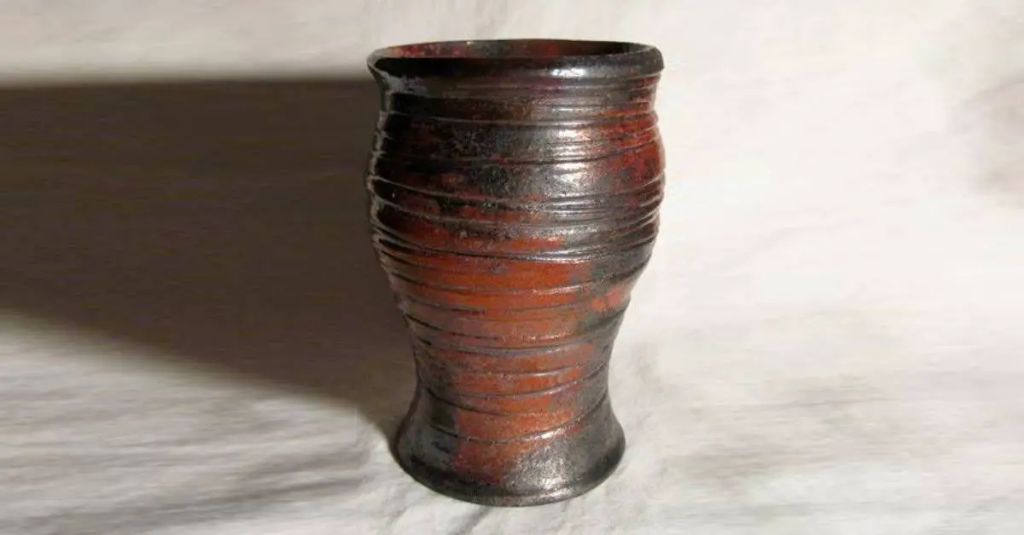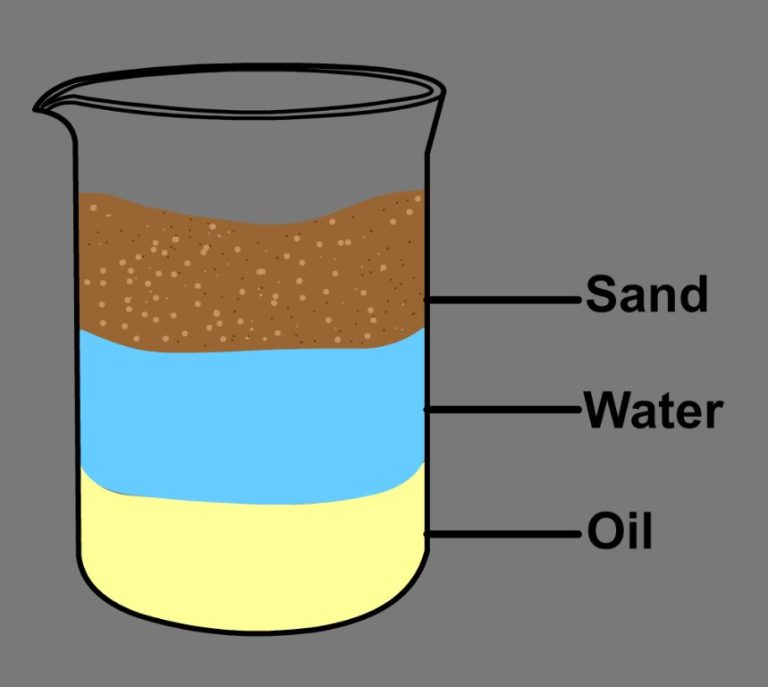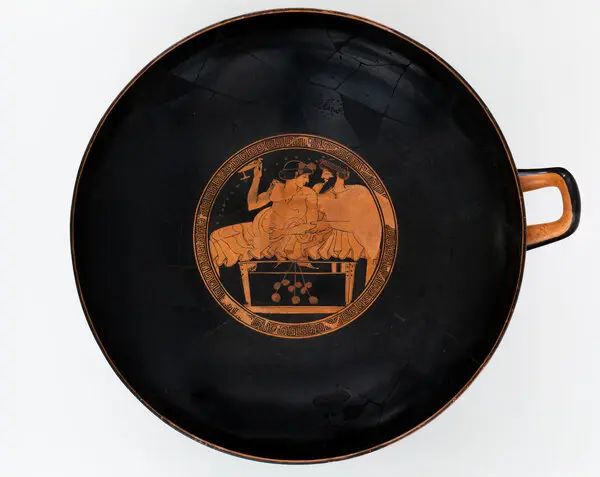What Does Raku Mean In Pottery?
Raku pottery originated in Japan in the late 16th century and is a traditional technique associated with the Japanese tea ceremony. The term “raku” translates to “enjoyment” or “comfort” and refers to the sense of relaxed spontaneity associated with this style of pottery.
Raku ware is made using low-firing earthenware clay and is typically decorated with simple motifs. After initially firing the pottery, it is removed from the hot kiln and placed into containers with combustible materials like sawdust or leaves. This produces areas of dramatic random cracking and coloring as the materials interact with the red-hot clay. The unique raku firing process results in one-of-a-kind pieces with an earthy, organic aesthetic.
While raku originated centuries ago, it exploded in popularity internationally in the mid-20th century as artists embraced raku’s unpredictable results. Today raku remains a popular technique for studio potters around the world. The raku process grants artists creative flexibility and the chance to collaborate with the kiln fire itself in shaping stunning ceramic works.
Origin of the Term Raku
The term “raku” comes from the Japanese word “raku” which means “enjoyment; comfortable; or ease” (Merriam-Webster). It originated as a philosophy of the Japanese tea ceremony that values simplicity, humility, and a kind of imperfect beauty. The term was later applied to a style of pottery developed in the 16th century by the Japanese potter Chōjirō, who was commissioned by the local ruler Toyotomi Hideyoshi to make tea bowls for the tea ceremony that embodied this wabi-sabi aesthetic.
This pottery style involved low-firing the pottery and rapidly cooling it, which produced crackled and misshapen bowls that aligned with the wabi-sabi values. As this pottery technique spread under the name “raku”, the term came to refer specifically to this fast-firing pottery style that produced visually imperfect yet serenely beautiful ceramic pieces. So while raku originally referred to a broader philosophy, it evolved as a label for a distinctive pottery aesthetic and firing technique inspired by traditional Japanese principles.

Characteristics of Raku Pottery
Raku pottery is known for its distinctive characteristics that result from the special raku firing process. Some key characteristics of raku pottery include:
Low Firing Temperatures: Unlike most pottery which is fired at high temperatures (over 2,200°F), raku is fired at much lower temperatures of around 1,800-1,900°F. This means the clay does not vitrify and keeps a more porous, earthen quality.1
Removal at Peak Temperature: In raku firing, the pottery is removed from the kiln and cooled rapidly when it reaches peak temperature. This quick cooling helps create raku’s distinctive cracked glazes.
Unique Cracked Glazes: The glazes used in raku are specially formulated to crackle and craze when exposed to rapid cooling. This creates a one-of-a-kind cracked pattern on each piece.
Raku Firing Process
The raku firing process involves specialized steps compared to typical pottery firing. Raku ware is fired initially at a high temperature, around 1800°F to 2000°F, which fully vitrifies the clay body. According to https://www.instructables.com/Raku-Pottery/, this initial firing is done rapidly, sometimes taking only about 15 minutes to reach temperature.
After the initial high-temperature firing, the pottery must be cooled quickly to avoid cracking. Traditionally this was done by removing the pieces from the hot kiln and placing them into containers filled with combustible materials like sawdust or leaves. The materials would ignite from the heat of the pottery, surrounding the ware in flames and smoke. This rapid cooling helps induce cracks in the glaze called crazing, which is a signature of raku pottery. According to https://www.soulceramics.com/pages/raku-firing, the containers of burning material also infuse the pottery with carbon, affecting the finished colors and textures.
Contemporary raku artists have developed unconventional cooling methods beyond traditional materials. Some use liquid nitrogen to rapidly cool ware, inducing unique crackling patterns. Others utilize materials like steel wool or copper filings to produce distinctive metallic effects during the smoking process.
Styles of Raku Pottery
There are two main styles of raku pottery – the traditional Japanese raku style and Western raku. Japanese raku originated in the 16th century and involves removing the pottery from the kiln while it is still glowing hot and placing it into materials like sawdust, leaves, or newspaper to create dramatic crackled effects. The process was refined by Hon’ami Kōetsu and later generations of the Raku family of potters (The Pottery Wheel).
Western raku developed later and involves cooling the ware more slowly after removal from the kiln. This creates a smoother surface without dramatic cracking. Western raku allows for more variation in shapes, glazes, and decoration (The Spruce Crafts).
There are also many variations within raku styles:
- Naked raku – unglazed raku
- Obvara – raku made in a saggar chamber
- Horsehair raku – introduced horsehair causes carbon trapping effects
- Feather raku – uses feathers instead of horsehair
These variations allow artists to create diverse visual effects and make each raku piece unique.
Raku Glazes
Raku glazes have some unique ingredients that enable the distinctive crackle effects seen in finished raku ware. According to How to Glaze Raku Pottery, common raku glaze ingredients include red iron oxide, copper carbonate, titanium dioxide, and various fluxes like calcium carbonate, dolomite, or frits. These ingredients help promote crazing, crackling, metallic effects, and other characteristic raku finishes.
Glazing techniques are also key for achieving the crackled raku look. Raku glazes are applied thicker than functional glazes, often using techniques like dipping or pouring to create texture. The thick glaze layer contracts at a different rate than the clay body during the raku firing process, causing cracks and crazing as the glaze cools. Raku potters may also add materials like sawdust or rice husks under the glaze, which burn away during firing and leave behind empty spaces that enhance cracking. Using multiple layers of contrasting colored glazes makes the crackle patterns more visible. Raku glazing takes experimentation to master, but the random cracking allows each piece to achieve a unique final appearance.
Raku Pottery Uses
Raku pottery is primarily used for artistic and decorative purposes rather than functional ones. While raku pots and vessels can technically be used for holding food or drink, they are typically considered “non-functional” and intended for display only.
Common types of raku pottery artwork include:
- Vases
- Bowls
- Plates
- Teapots
- Figurines
- Wall plaques
Raku artists tend to focus on unique shapes, bold designs, and abstract or minimalist styles that highlight the handmade imperfections and cracked glaze finishes characteristic of raku. The irregular colors and textures of raku make each piece truly one-of-a-kind.
While some functional raku tea bowls and vessels are produced, especially in Japan where the technique originated, most contemporary raku pottery is designed as non-utilitarian art objects for display. The porous nature of raku ware makes it unsuitable for holding liquid over time. Raku’s value lies in its distinct natural aesthetic rather than practical usage.
Notable Raku Artists
Several notable artists have made significant contributions to the world of raku pottery. One key figure is Honami Koetsu, a famous Japanese potter and calligrapher who lived from 1558-1637. Koetsu helped establish the Japanese raku style and tradition, known for its simplicity and Zen aesthetic. He collaborated often with other important artists like potter Chojiro and painter Tawaraya Sotatsu to produce unique raku pieces. Koetsu’s raku works emphasized subtle imperfections like crackling and uneven glazes as part of the natural wabi-sabi beauty.
Influential Western raku potters include Paul Soldner, who studied with raku masters in Japan in the 1950s before bringing raku techniques back to the United States. Soldner experimented with raku glazes and firing methods, writing the seminal book “Raku Pottery” in 1968. Other notable Western raku artists are Daniel Rhodes, who coined the term “American raku,” and potter Otto Heino who developed his own oxidized raku style. Contemporary raku artists like Overarching Raku Artist Jacqueline Rice and artist Christina West continue advancing raku pottery as an artform today.
These and many other artists have built upon raku’s long heritage while also evolving new raku styles and aesthetics over time. Their work demonstrates both the diversity and continuity within the raku tradition spanning many centuries.
Raku in Contemporary Art
Raku pottery has continued to evolve and thrive as a contemporary art form over the past few decades. Many modern raku artists have pushed the boundaries of traditional raku, creating innovative new styles and techniques. Raku is now prominent at many major art fairs and exhibitions around the world.
Contemporary raku artists often focus on more sculptural, abstract shapes rather than traditional vessels and pots. Bold, experimental raku glazes in bright, vibrant colors are also popular in modern raku ware. Some contemporary raku incorporates mixed media, with raku clay combined with wood, metal, and other materials. A few contemporary raku artists have even incorporated electronic components into their raku pieces.
Raku has become celebrated at top international events like the Smithsonian Craft Show, Philadelphia Museum of Art Craft Show, and Sculptural Objects Functional Art + Design (SOFA) Chicago. Prominent galleries like Donna Schneier Gallery and Lacoste Gallery in Concord, MA regularly feature raku ceramic artists. Leading museums like the Museum of Arts and Design and Metropolitan Museum of Art in New York also showcase raku as a significant contemporary art form.
Many credit the rise of raku in contemporary art to artists like Paul Soldner who pushed raku in new avant-garde directions starting in the 1950s and 60s. Soldner introduced abstract expressionist influences and new raku firing techniques that created unpredictable, abstract effects. Other pioneering contemporary raku artists include Takuro Shibata, Jun Kaneko, and Kristen Kieffer.
The Appeal and Significance of Raku
Raku pottery holds great cultural importance in Japan, representing core aspects of Zen philosophy and the Japanese tea ceremony. According to GB Times, raku ware symbolizes concepts like wabi-sabi, the acceptance of transience and imperfection. The irregular shapes, earthy colors, and crackled glazes of raku align with Zen principles of humility, naturalness, and asymmetry.
Raku also possesses unique aesthetic qualities resulting from its quick low-fired process. The pottery achieves a soft, organic look from exposed clay with drizzled glazes and smoke effects from removal while red-hot from the kiln. Raku’s earthy, raw, imperfect nature contrasts with polished, mass-produced ceramics, appealing to craft artisans and collectors.
While originating in Japan, raku developed into a global ceramic art phenomenon by the mid-20th century. According to a thesis from Australian National University, raku spread internationally as potters combined Japanese raku techniques with local styles and materials. Raku remains popular today as artists around the world experiment with new raku glazes, forms, and firing methods while preserving its handmade, wabi-sabi essence.



